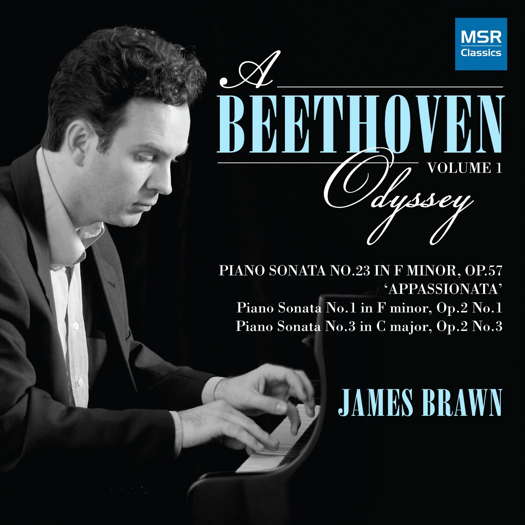- James Sohre
- Berlin Philharmonic
- Germany
- Worcester
- Igor Luchenok
- Swansea
- Myroslav Skoryk: Melodiya
- Jacques Cohen: Lancastria

Truly Admirable
GERALD FENECH listens to works by
French composer Louise Farrenc
'An exhilarating addition to the composer's discography, passionately performed and recorded.'
Louise Farrenc was born in Paris on 31 May 1804 into a highly artistic family. When fifteen she began to take composition lessons with the famous Anton Reicha, but on her marriage to her fellow student, the flautist Aristide Farrenc, she gave up her studies two years later in order to travel around France giving concerts with him. Tiring of this, they subsequently founded a publishing house: 'Editions Farrenc', which became one of France's best known music publishers. Indeed, they produced twenty-three volumes of music for piano and harpsichord over a number of years. Louise later resumed her studies with Reicha, and commenced touring as a virtuoso pianist 'circa' 1842. That same year she was appointed professor of piano at the Paris Conservatoire, a position she held until 1873. She died in Paris on 16 September 1875.
Her output, which is not profuse, suffered undue neglect for a long span of time, but in recent years her music is enjoying a much deserved revival. Initially she composed only for the piano, but she subsequently expanded her repertoire to include orchestral and chamber music. The crown jewels of Farrenc's orchestral works are her three symphonies. The First, written in 1841, strongly attests its ancestry in the German symphonic tradition, especially Beethoven, but Farrenc was no cheap imitator. This is music of tremendous artistic beauty, with a clear sense of purpose, a wonderful natural inclination for orchestration and an effortless personal melodic style, most notably in the second and third movements, while the opening and concluding 'Allegros' are full of fiery imagination of which even Beethoven would have been proud.
Listen — Louise Farrenc: Finale (Symphony No 1)
(track 4, 3:59-4:56) © 2020 Naxos Rights (Europe) Ltd :
Still, the lyrical quality of her work is closer to Mendelssohn and Schumann. In all truth, the latter was a great admirer of her piano music.
The Overtures Nos 1 & 2 were both written in 1834, and like the First Symphony of seven years later, they contain music of the utmost dramatic impact and a formidable sense of sweep. No 2 in E flat, in particular, with its rhythmic 'stutter' at the very beginning, already brings hints of dark and deep tragedy, and the work left a very positive impression on no less a figure than Hector Berlioz.
Listen — Louise Farrenc: Overture No 2
(track 6, 0:00-0:57) © 2020 Naxos Rights (Europe) Ltd :
The 'Gallenberg' Variations of 1838 are a showcase for pianistic virtuosity and, although the original theme is rather tame, it is truly admirable what Farrenc's ingenuity is able to do with it.
Listen — Louise Farrenc: Grand Varations on a Theme by Count Gallenberg
(track 7, 12:34-13:33) © 2020 Naxos Rights (Europe) Ltd :
An exhilarating addition to the composer's discography, passionately performed and recorded.
Copyright © 10 March 2020
Gerald Fenech,
Gzira, Malta

CD INFORMATION - FARRENC: SYMPHONY NO 1; OVERTURES




